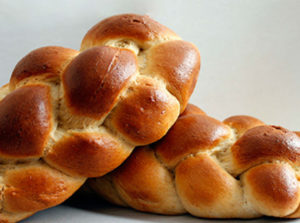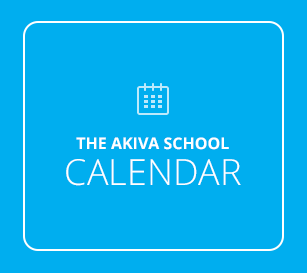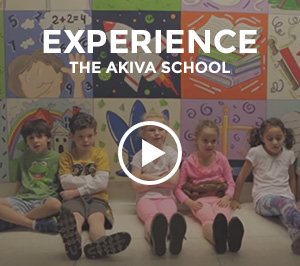 In this week’s parashah, God tells Moses to instruct the Israelites that when they enter the land of Israel and they bake bread, they must set aside a portion for God.
In this week’s parashah, God tells Moses to instruct the Israelites that when they enter the land of Israel and they bake bread, they must set aside a portion for God.
And you eat of the bread of the land, you shall set aside as a gift to the Lord: as the first yield of your baking you shall set aside a loaf (challah) as a gift… You shall make a gift to the Lord from the first yield of your baking throughout the ages.
WHAT IS CHALLAH?
In the time of the Temple, Challah referred to the portion of dough that was removed and given to the Kohen (the Priest). Although the Temple is no longer standing, when we bake challah we still remove a portion of the dough before shaping and burn it in commemoration of this commandment.
WHY DO WE CALL THE BRAIDED BREAD WE EAT ON SHABBAT CHALLAH?
In the middle ages in the German/Austria area, the traditional local Sunday loaf was prepared in various shapes and designs. The Jews seem to have adopted this as their Shabbat bread in around the 15th century.
WHY MUST EVERY SHABBAT AND YOM TOV MEAL BEGIN WITH TWO COMPLETE LOAVES?
The two complete loaves of challah remind us of the double portion of manna the Israelites received on Friday so that they would not do the work of gathering and preparing food on Shabbat.
WHY DO WE COVER THE CHALLAHS UNTIL AFTER WE SAY KIDDUSH?
There are different explanations:
- We wrap and envelop the challah to remind us of the manna that was preserved and protected by the dew on the ground.
- The rabbis set a hierarchy in the order of blessings we are supposed to say on different foods, following the list of seven foods from the land of Israel – wheat, barley, grapes, figs, pomegranates, olives and dates. Since wheat is mentioned before grapes, blessing over the bread should come first. Because we begin with kiddush, we cover the bread so that it is not “embarrassed” by its blessing following grapes instead of preceding.
- In Talmudic times, the food for Shabbat would be brought out on trays only after the kiddush – which sanctifies Shabbat – was recited, to signify that the meal was served in honour of this holy day. The challah is covered today so that its unveiling after kiddush similarly indicates the start of this special meal in honour of Shabbat.
WHY DO WE HAVE THE CUSTOM TO EAT CHALLAH WITH SALT?
Some people dip the challah in salt before reciting the blessing. Others say the blessing and then cut or tear the challah and wither dip or sprinkle the pieces with salt. Why?
- Historically, bread was lacking in taste and so was salted before eating. The first bite of a food after the blessing is made should be the most delicious, and so we salt the first bite of challah to further honour the blessing we have made.
- Salt was part of every offering made on the altar in the Temple. Today our table full of food is symbolic of the Temple’s altar, and as we learned at the start, challah was initially the offering of dough that was made in the Temple.
For more reading on how to make, take and shape Challah – click here.
Shabbat Shalom.



